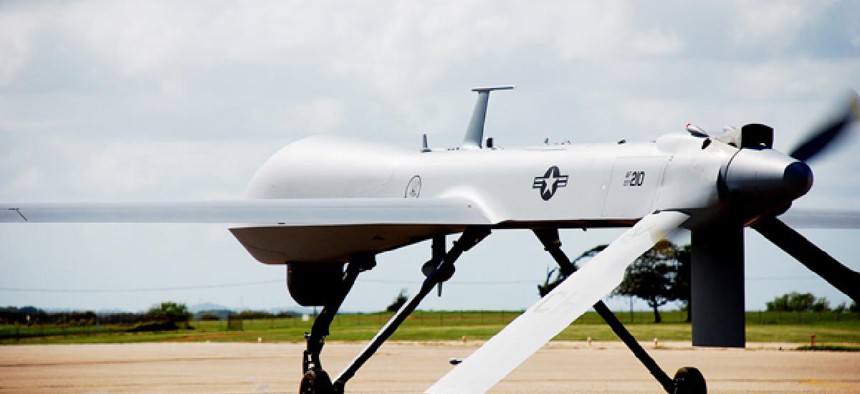Pilots: Drones pose major safety threat in civilian air space

Air Force
FAA has cleared dozens of organizations to operate unmanned aircraft.
Allowing widespread operation of drones in the United States amounts to a recipe for disaster, military and private pilots told the Federal Aviation Administration, which has cleared some 60 organizations to operate the remotely piloted planes and plans to set up six test ranges for unmanned aircraft systems this summer.
David Bourdon, a pilot who said he has flown surveillance missions in Afghanistan and Iraq since 2003, said he has had five “near misses” with drones. Based on that experience, he opposes the use of unmanned aerial vehicles in the United States, except in restricted airspace or along the U.S. border in designated corridors.
FAA established a rule-making process in March for developing the six test sites required in the 2012 FAA Modernization and Reform Act prior to integration of drone flights into the national airspace system in 2015. Bourdon, in his comments to FAA, highlighted several key problems, particularly the fact that drone pilots operating from a remote location have limited vision.
Bourdon, who did not disclose his military affiliation in the filing, said, “the operators of these aircraft are looking through a soda straw” and “when a UAV loses its data link with its operator, they tend to change altitude on their own and violate other manned aircrafts’ airspace.”
Stefan Werner, who has flown as a spotter and chase pilot on Predator UAV test flights in Southern California around Edwards Air Force Base, said the focus of cameras mounted on drones makes it difficult for operators to adhere to an essential component of flight safety -- the see-and-avoid rule.
Werner, in his comment to FAA, said, “the cameras in the UAVs are designed to look forward and below with stunning detail . . . but can’t scan the airspace slightly above the UAV. For that reason alone I believe they will be a danger to the flying public if allowed to free fly solely based on [air traffic control] radar returns.” He recommended FAA restrict drone operations to high altitudes, far away from manned aircraft flying under visual flight rules. Andrew Moore, executive director of the National Agricultural Aviation Association, which represents operators of crop duster aircraft, which fly under visual flight rules, said FAA must ensure that drones and pilots adhere to see-and-avoid requirements to avert midair collisions. Moore said he considered strict control of drone operations in the planned test sites a “life-and-death issue.”
Thomas Buchner, a pilot who patrols pipelines for Southern Union Co., which operates 15,000 miles of natural gas pipelines, said FAA should consider the location of pipelines before it selects the six drone test sites. “Pipeline patrol pilots are relatively busy enough dodging antennas, birds, crop dusters, etc., and shouldn't also be required to dodge unmanned test aircraft during our routine patrol work,” he wrote.
FAA has received only 52 comments on its drone test site plans. Last week, Reps. Ed Markey, D-Mass., and Joe Barton, R-Texas, co-chairmen of the Bipartisan Congressional Privacy Caucus, raised serious concerns that drones will be used to spy on Americans in a letter to Michael Huerta, acting FAA administrator. Nonetheless, FAA has received only two comments dealing with potential invasion of privacy by drones.
Drone backers in Arizona, Florida, Georgia, Hawaii, Nevada, Maine, North Dakota and the Canadian province of New Brunswick used the rule-making process to advocate location of the drone test ranges in their airspace.






